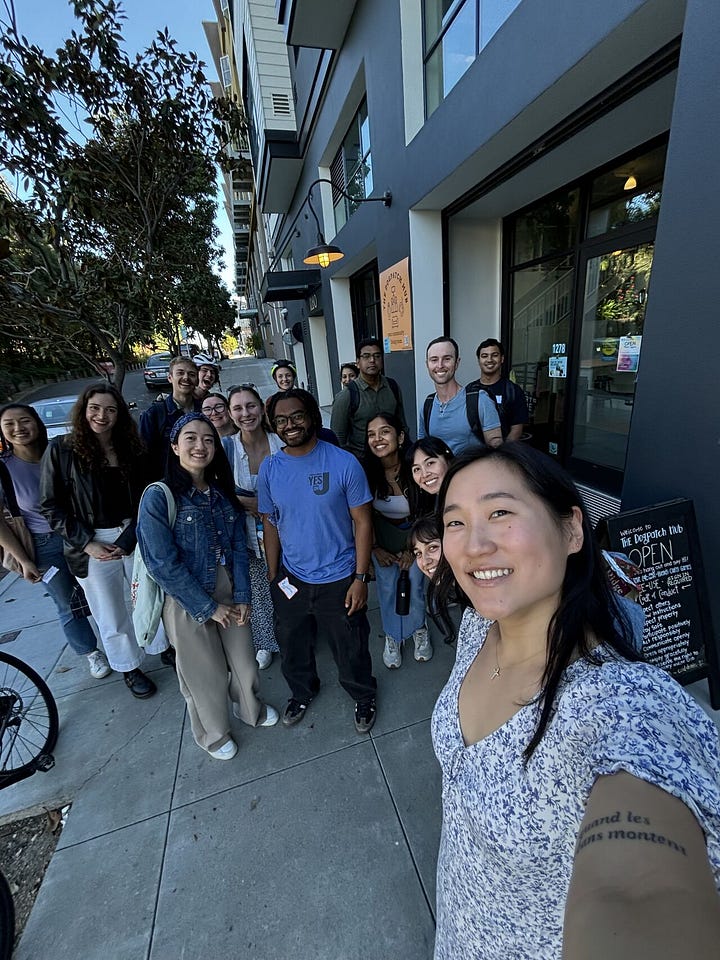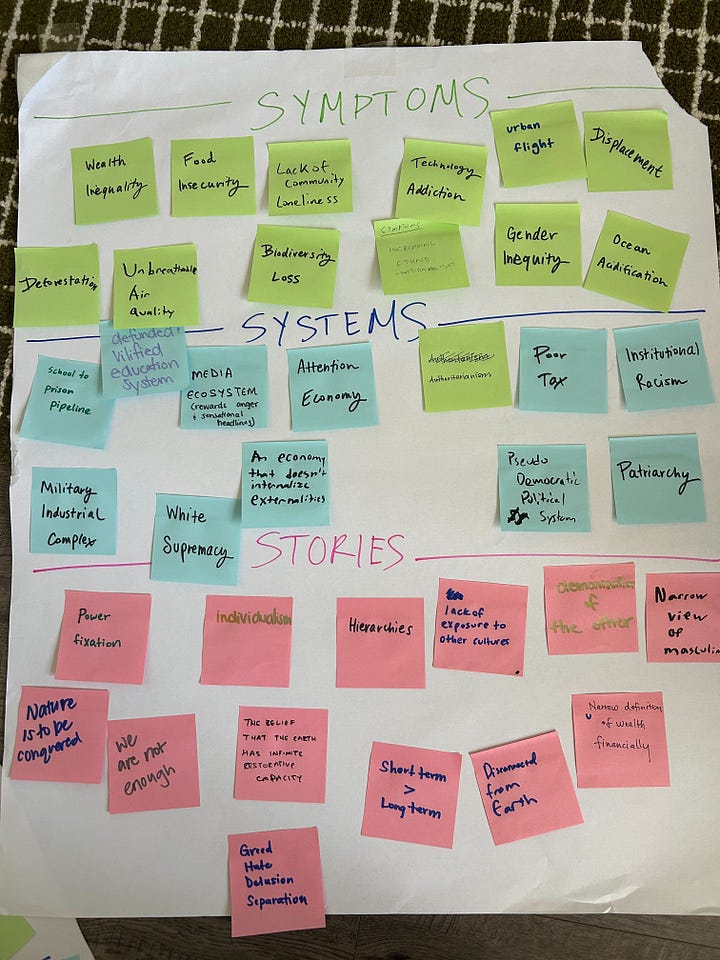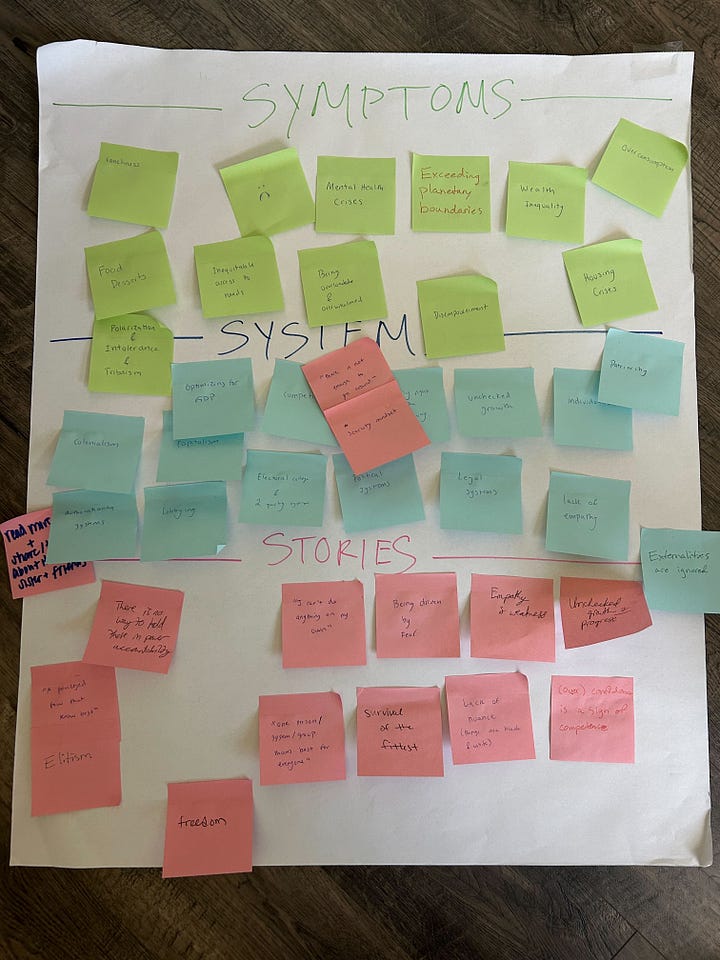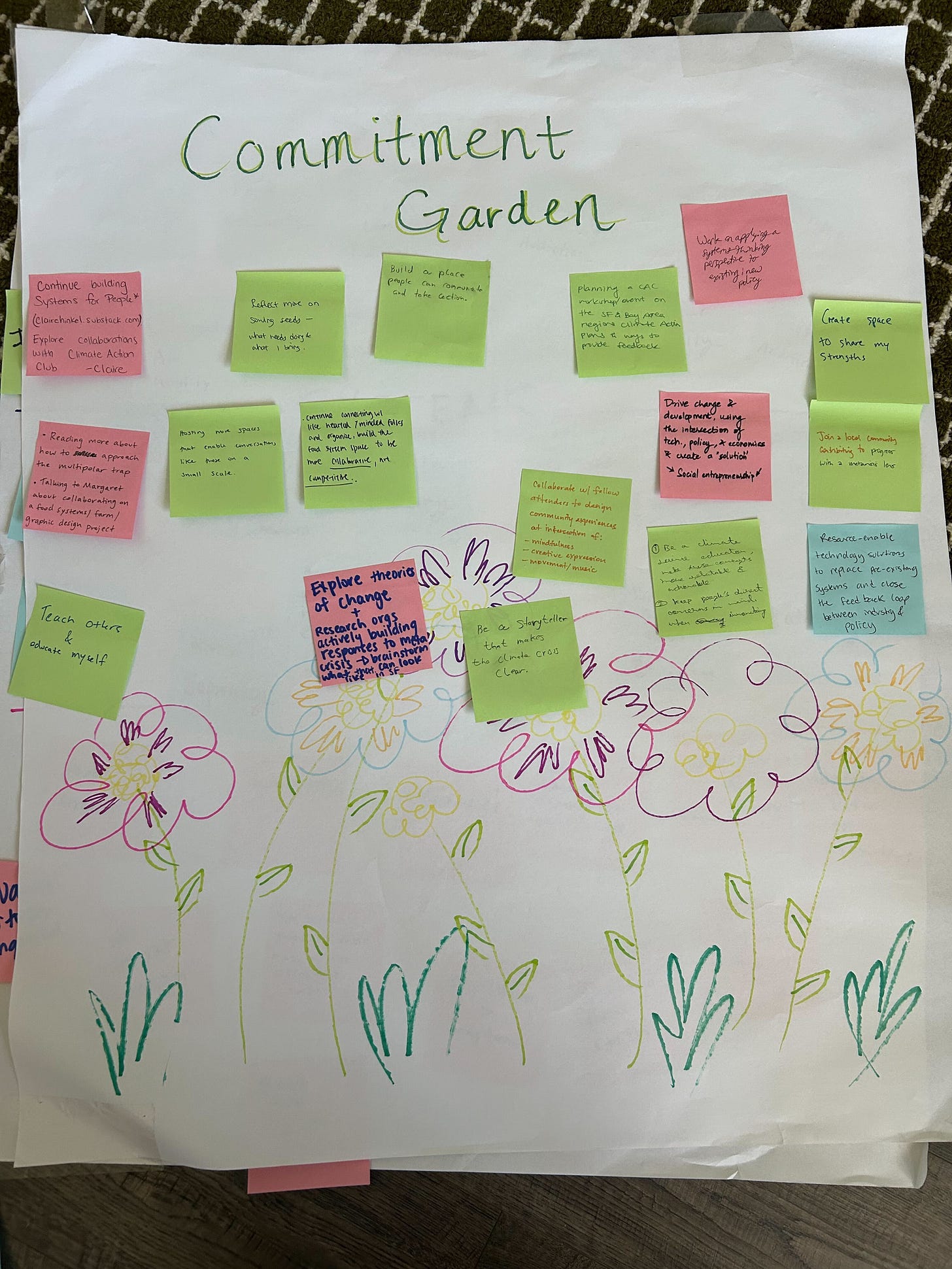Unraveling the Climate Crisis: Systems Thinking Workshop Recap 🌎
Reframing climate solutions by going beyond symptoms to root causes.


A couple of weeks ago, we hosted our first-ever workshop focused on systems thinking and we’re still thinking about the conversations that unfolded.
If you couldn’t make it, here’s a quick overview of what we explored:
🌿 Symptoms, Systems, and Stories
We started by breaking down the climate crisis through three lenses:
Symptoms – The visible, immediate problems that signal deeper dysfunction (e.g. climate disasters).
Systems – The underlying structures, incentives, and feedback loops that produce and reinforce those symptoms (e.g. extractive economies).
Stories – The cultural narratives and assumptions that shape how we understand and design our systems (e.g. infinite growth and progress).


As changemakers, and as a society, we often focus on solutions and answers. But what if the way we think about the crisis (and how we respond to it) is actually part of the crisis?
When we keep asking the same kinds of questions, we risk reinforcing the same systems that created the problem.
So instead of asking: “How do we reduce emissions?”
What if we asked: “How do we stop falling into patterns of ecological overshoot?”
By shifting our questions, we open up new ways of thinking to explore the root causes and new possibilities for change.
🔍 Deep Dives & Case Studies
We explored concepts like Jevon’s Paradox (more efficiency = more consumption), perverse incentives and externalities, the Prisoner’s Dilemma, and multipolar traps. (We recommend checking out the resources below if you’d like to dig into these ideas further.)
🚗 Electric Vehicle Case Study
We applied these systems thinking frameworks to a real-world case study: electric vehicles (EVs). On the surface, EVs seem like a promising climate solution—designed to reduce greenhouse gas emissions and air pollution by replacing gas-powered cars. But when we dug deeper, we saw how focusing on symptoms without addressing the systems and stories behind them can lead to unintended consequences.
🧭 Goal of the solution:
Reduce emissions and pollution by replacing gas-powered vehicles with electric ones.
🩹 What it addresses:
Symptoms: Tailpipe emissions, health impacts from pollution, reliance on fossil fuels.
Systems: Car-centric infrastructure, lack of public transit, suburban sprawl, the economic system of ownership.
Stories: Cars as freedom, status, and identity; tech as a fix-all; growth over balance.
While EVs reduce tailpipe emissions, they often perpetuate the same extractive systems and car-centric narratives. So, instead of asking, “How do we replace gas cars with electric ones?” we might ask, “How do we meet society’s transportation needs more equitably and sustainably?”
This shift in framing matters. When stakeholders—from consumers to governments to manufacturers—act independently based on short-term incentives, we often see unintended consequences: destructive mining, labor exploitation, increased grid strain, and continued inequality. Without addressing the underlying systems and stories, EVs risk rebranding the status quo rather than transforming it.
🌍 The Third Attractor
We also discussed visions for the future and a concept called The Third Attractor. When we conceptualize what the future state of our society could look like, there is what is known as the first attractor, which looks like societal collapse and chaos, and the second attractor, which is stability imposed through centralized control.
The third attractor is the future that falls somewhere between the other two. It looks something like resilience through decentralized intelligence and central enactment. The third attractor asks us to reimagine what is possible.
We explored how organizations and movements are working towards the third attractor by:
Addressing symptoms – taking action to reduce harm now
Transforming systems – redesigning the structures that shape our world
Evolving stories – shifting collective mindsets and cultural narratives
These aren’t static or definitive “solutions.” They’re approaches that will continue to evolve as new possibilities emerge.
💡 Seeds of Change
We closed by committing to what our next steps would be and reflecting on our own roles in the change ecosystem:
What needs to be done? What do you bring? What are you drawn to? Where do these intersect?
Everyone has a place in this work—from storytellers to builders to caregivers. Naming our strengths and how we can play a role helped us talk through how we can move forward together, in collaboration.
✨ Want to keep learning?
If this sparked your interest, come to our next event! We’re hosting a picnic in the Mission on May 31st. RSVP here! You can keep up with all of our upcoming events here.
Navigating this content in community helps it feel less overwhelming and reminds us that we don’t have to figure it out alone. Join the club by filling out our onboarding form here.
In the meantime, here are a few great resources to to dive deeper:
🎧 Podcast: What is the Metacrisis? – Entangled World
📹 Video: In Search of the Third Attractor (Part 1 & 2) – Rebel Wisdom (podcast version available)
📹 Video: Jevons Paradox Explained
📹 Video: Intro to the Prisoner’s Dilemma
With love + action,
Climate Action Club 🌱





Does any part of this workshop focus on the positive benefits of a warmer, CO2 enriched atmosphere?
Great summary! The inquisitiveness at the workshop was amazing, and I hope we can have more events like this.